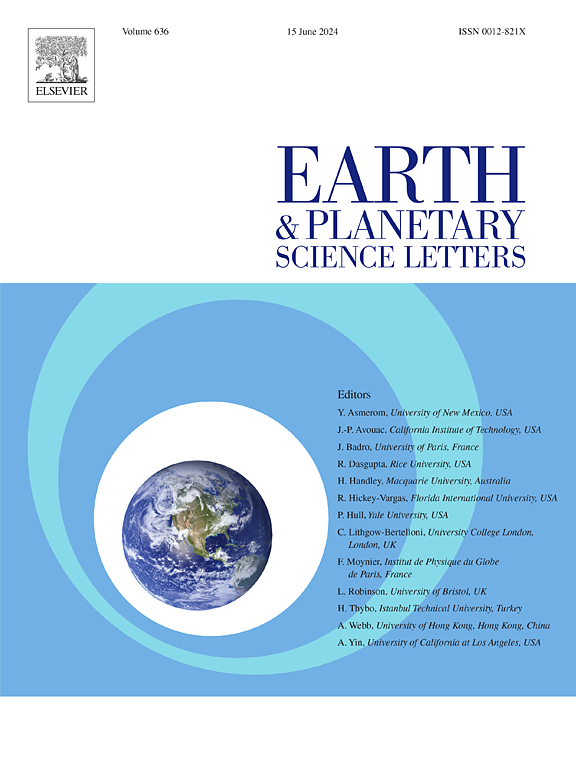Rock fabric and hydromechanical evolution from Quartz to clay rich faults and implications for slip stability
IF 4.8
1区 地球科学
Q1 GEOCHEMISTRY & GEOPHYSICS
引用次数: 0
Abstract
Fault rock heterogeneity has a dominant effect on frictional and fluid flow properties of faults, yet the study of how fault hydromechanical properties are coupled, evolve with fabric and influence slip behaviour is still in its infancy. Here, we show that the increase in clay content within a quartz-bearing experimental fault promotes a fabric evolution from a load-bearing granular framework to an interconnected foliated and clay-rich network. This fabric evolution causes a significant reduction in frictional strength, a marked decrease in permeability, and enhanced frictional stability. Fault stability is favoured by contact area saturation (mechanical effect) acting in concert with fault dilation associated to a reduction in pore fluid pressure promoted by transient undrained conditions within the low permeability, clay-rich faults (hydromechanical effect). Our results indicate that fault rock fabric and associated hydromechanical properties exert a primary control on fault slip behaviour. The enhanced stability within pressurized clay-rich faults matches well with observations of aseismic slip during hydraulic stimulations of shales and models proposing dilation strengthening as a mechanism for the occurrence of slow slip events in clay-rich sediments at shallow crustal levels.
从石英到富粘土断层的岩石组构和流体力学演化及其对滑动稳定性的影响
断层岩石的非均质性对断层的摩擦和流体流动特性具有主导作用,但断层流体力学特性如何与组构耦合、演化并影响滑动行为的研究仍处于起步阶段。本研究表明,含石英实验断层中粘土含量的增加促进了结构从承重粒状框架向相互连接的片理和富含粘土的网络演化。这种织物的演变导致摩擦强度显著降低,透气性显著降低,摩擦稳定性增强。接触面积饱和(力学效应)和断层扩张(孔隙流体压力降低)有利于断层的稳定性,而孔隙流体压力的降低是由低渗透率、富含粘土的断层内的瞬态不排水条件(流体力学效应)引起的。我们的研究结果表明,断层岩石组构和相关的流体力学性质对断层滑动行为起主要控制作用。高压富粘土断层内的稳定性增强与页岩水力刺激时的地震滑动观测结果相吻合,并且模型提出膨胀强化是地壳浅层富粘土沉积物中慢滑动事件发生的机制。
本文章由计算机程序翻译,如有差异,请以英文原文为准。
求助全文
约1分钟内获得全文
求助全文
来源期刊

Earth and Planetary Science Letters
地学-地球化学与地球物理
CiteScore
10.30
自引率
5.70%
发文量
475
审稿时长
2.8 months
期刊介绍:
Earth and Planetary Science Letters (EPSL) is a leading journal for researchers across the entire Earth and planetary sciences community. It publishes concise, exciting, high-impact articles ("Letters") of broad interest. Its focus is on physical and chemical processes, the evolution and general properties of the Earth and planets - from their deep interiors to their atmospheres. EPSL also includes a Frontiers section, featuring invited high-profile synthesis articles by leading experts on timely topics to bring cutting-edge research to the wider community.
 求助内容:
求助内容: 应助结果提醒方式:
应助结果提醒方式:


